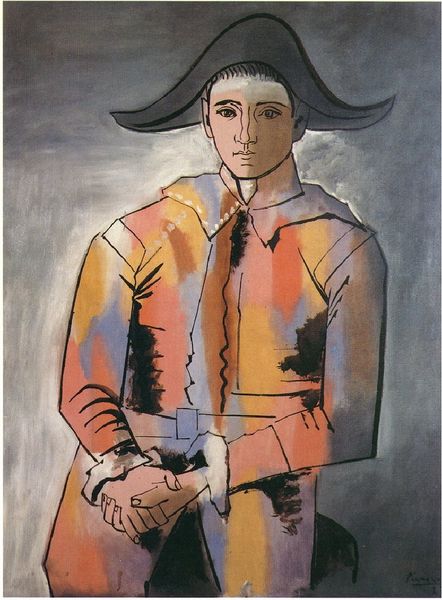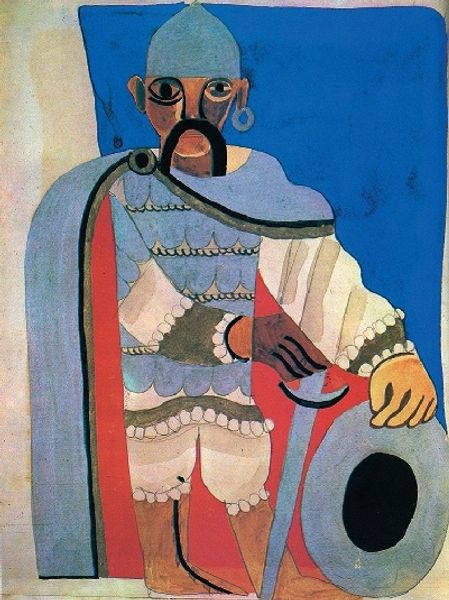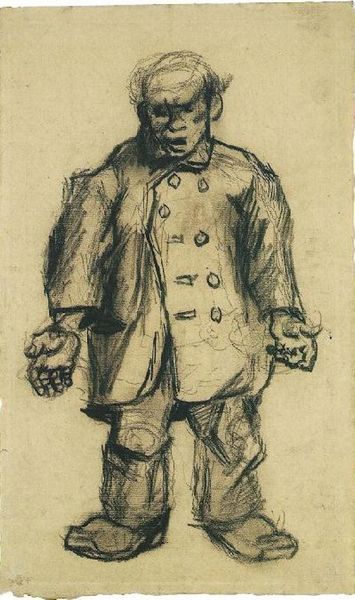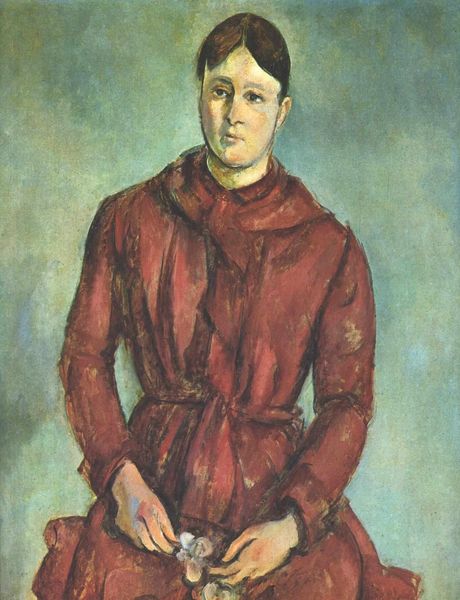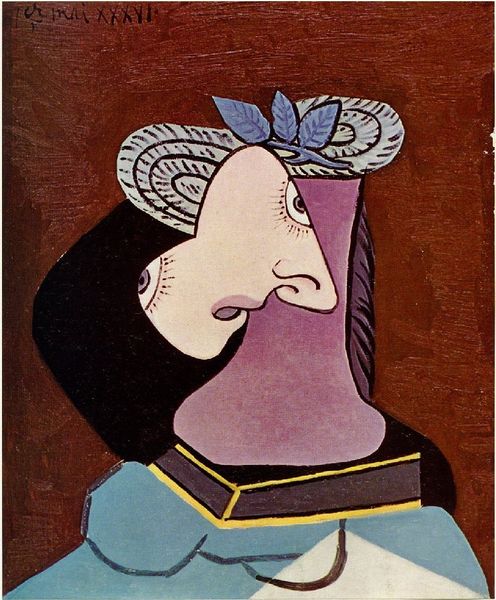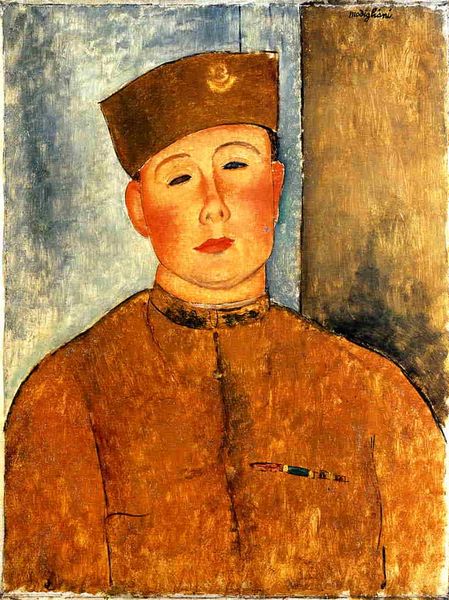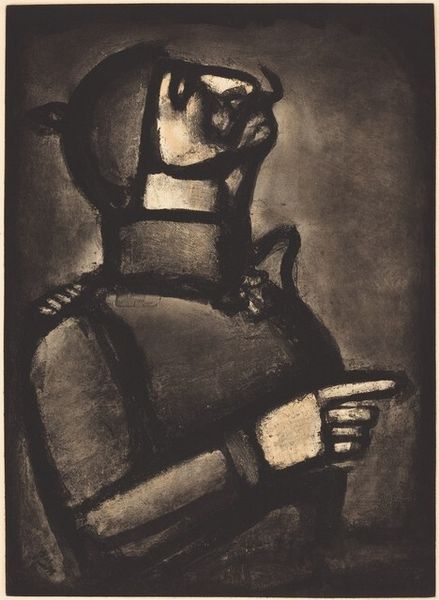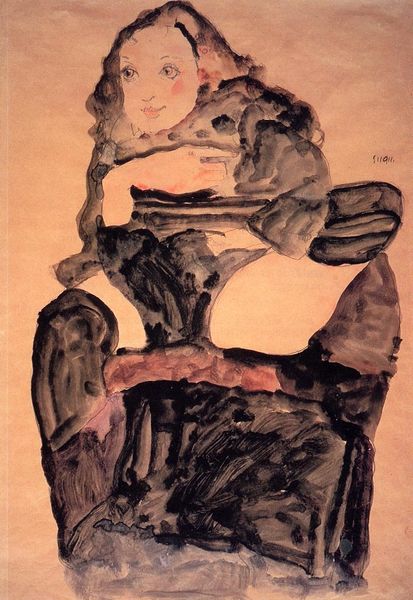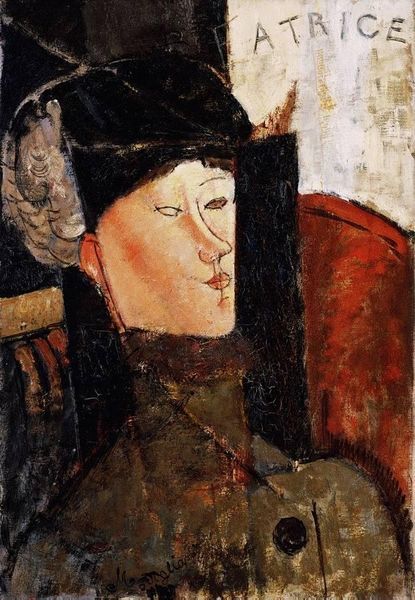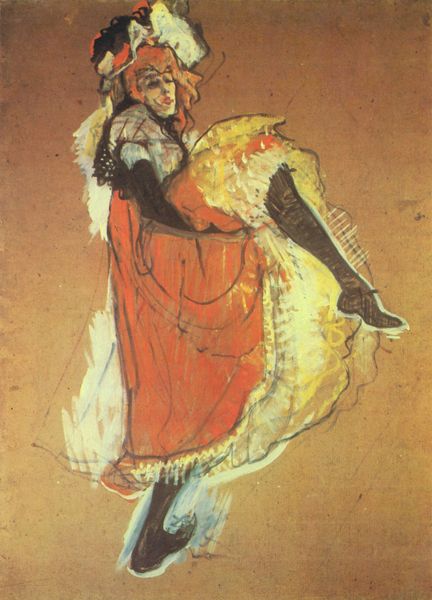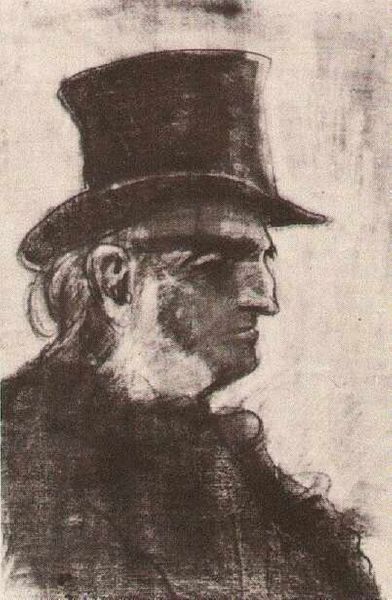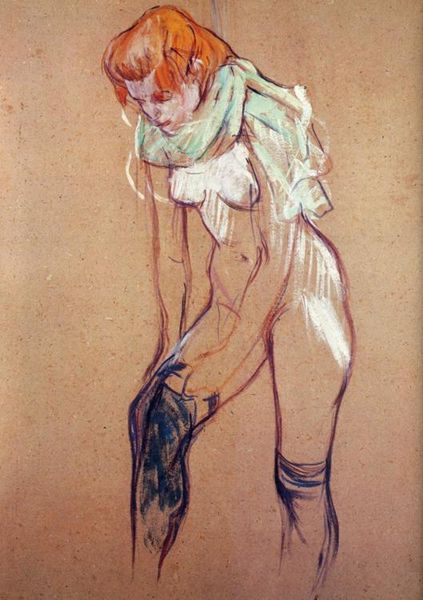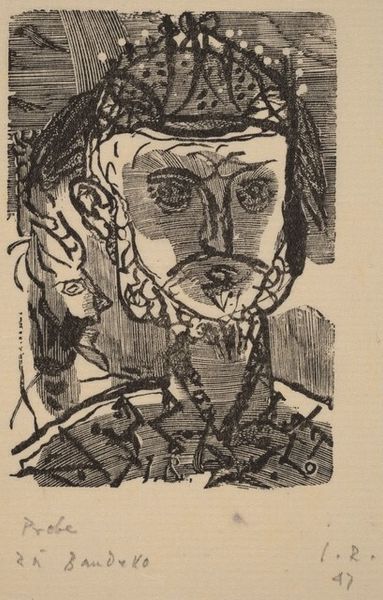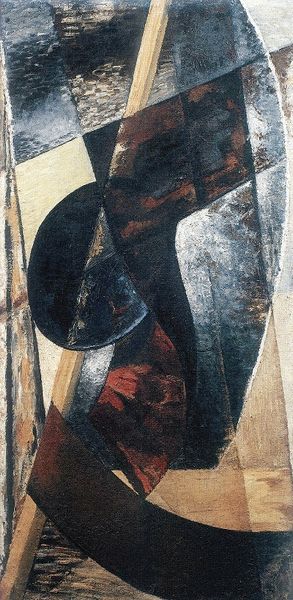
Dimensions: 130.5 x 97 cm
Copyright: Pablo Picasso,Fair Use
In this 1923 painting, Pablo Picasso depicts Jacinto Salvado as a seated harlequin using oil on canvas. The harlequin, traditionally a comedic character from Italian Commedia dell'Arte, became a recurring motif in Picasso's work, particularly during his early Cubist period. Here, the figure's melancholic expression contrasts with the costume's vibrant colours. The harlequin may be interpreted as a metaphor for the artist himself, a figure on the margins of society. Picasso’s choice to paint Salvado in this way speaks to the cultural moment in Paris between the wars, when popular culture was being mined for its subversive potential. Understanding this artwork requires us to examine both Picasso's personal history and the broader cultural context of early 20th-century Europe. Art historians consult letters, biographies, and contemporary criticism to better understand the social conditions that shape artistic production. The meaning of this artwork, like all art, is contingent on its social and institutional context.
Comments
No comments
Be the first to comment and join the conversation on the ultimate creative platform.
